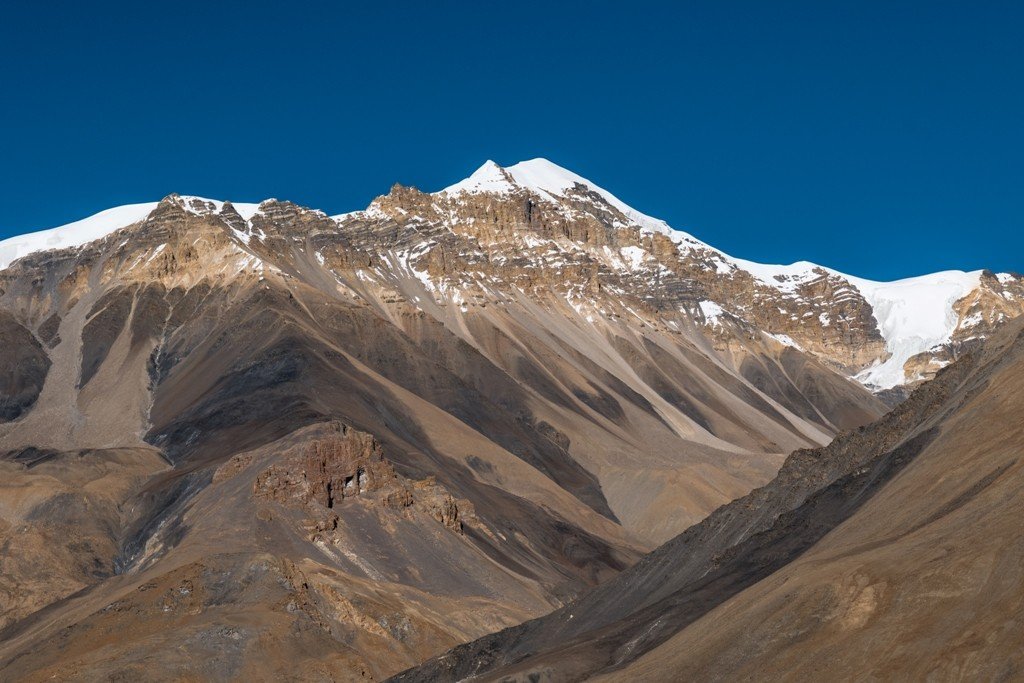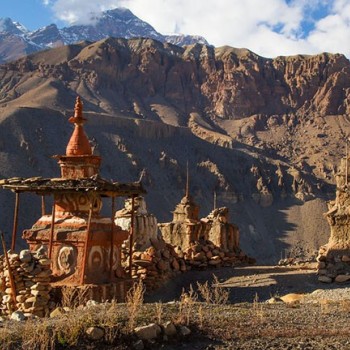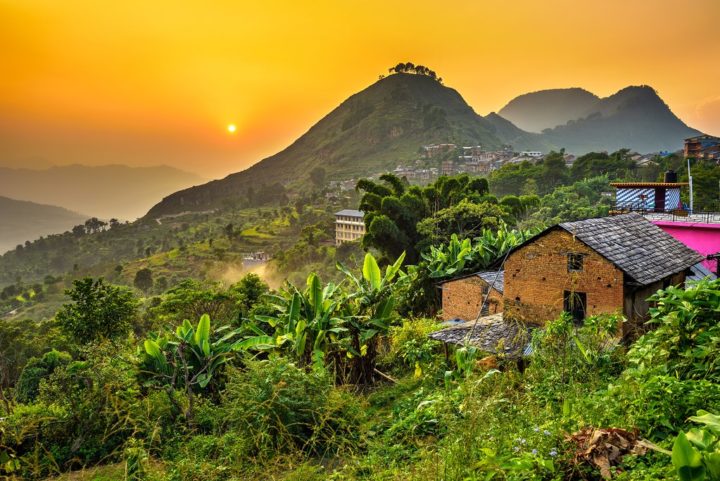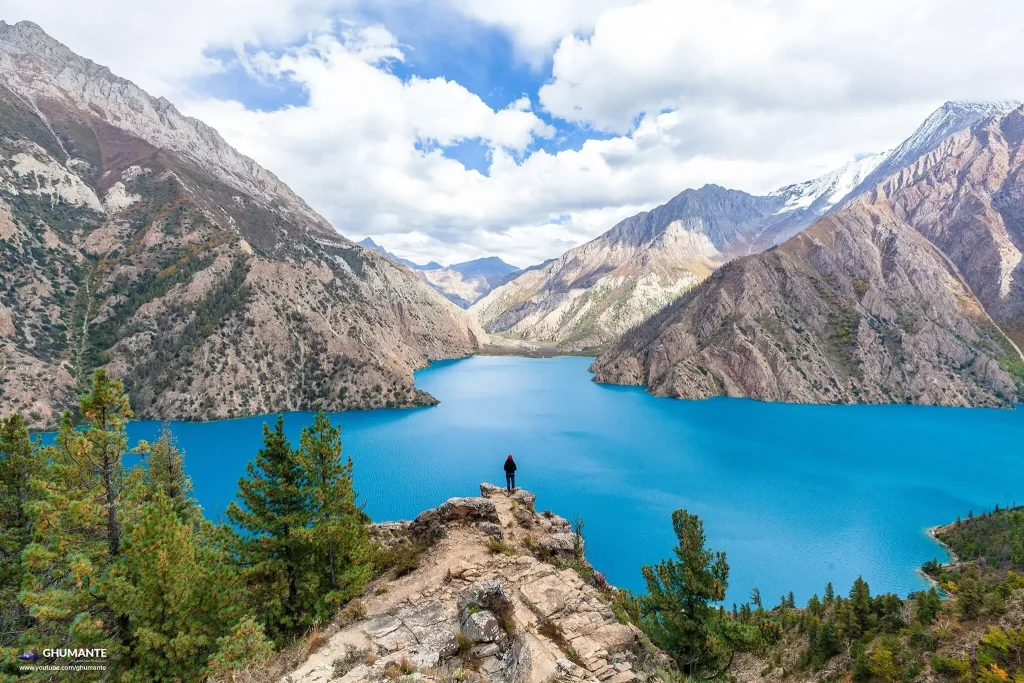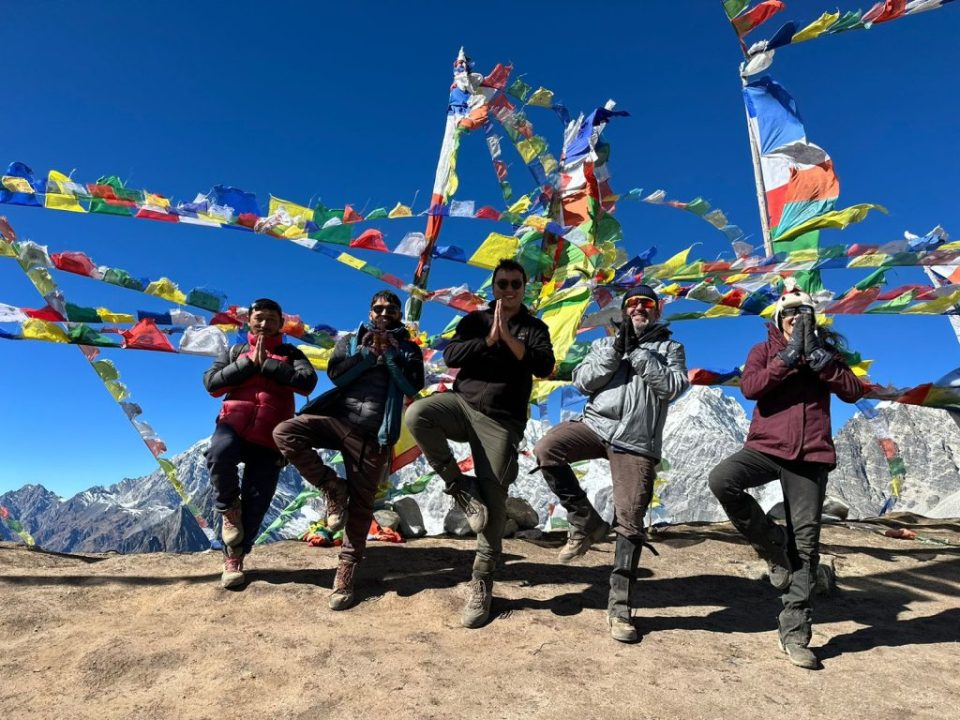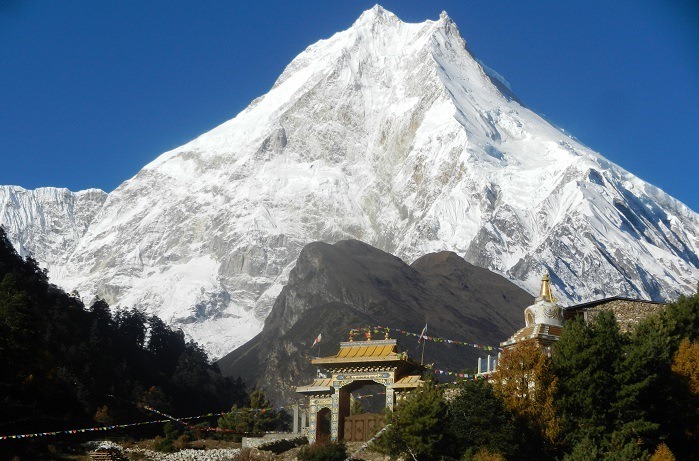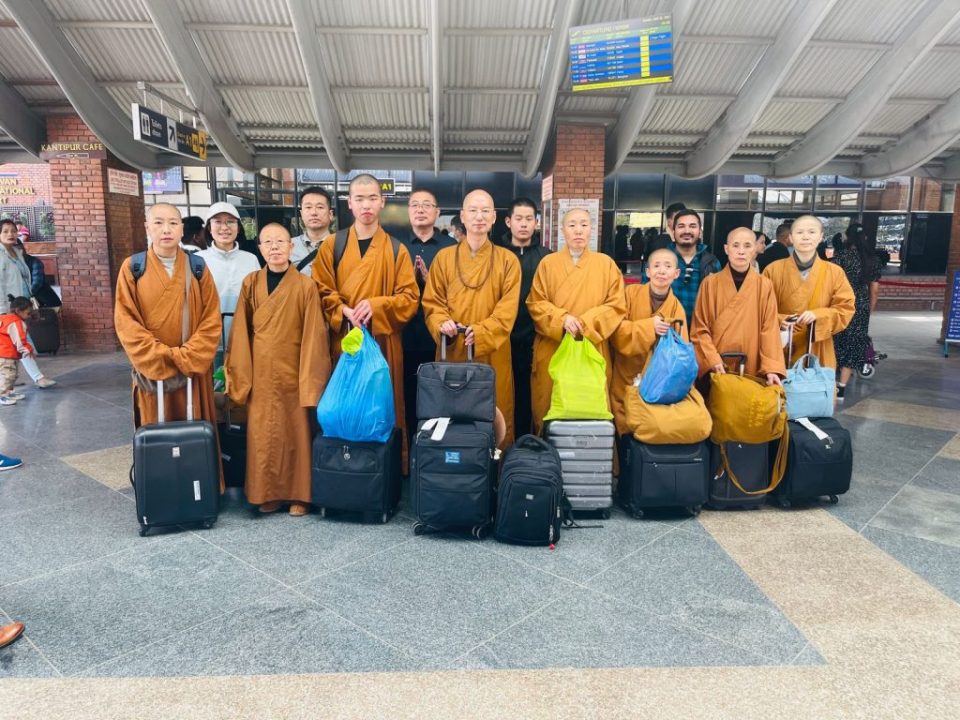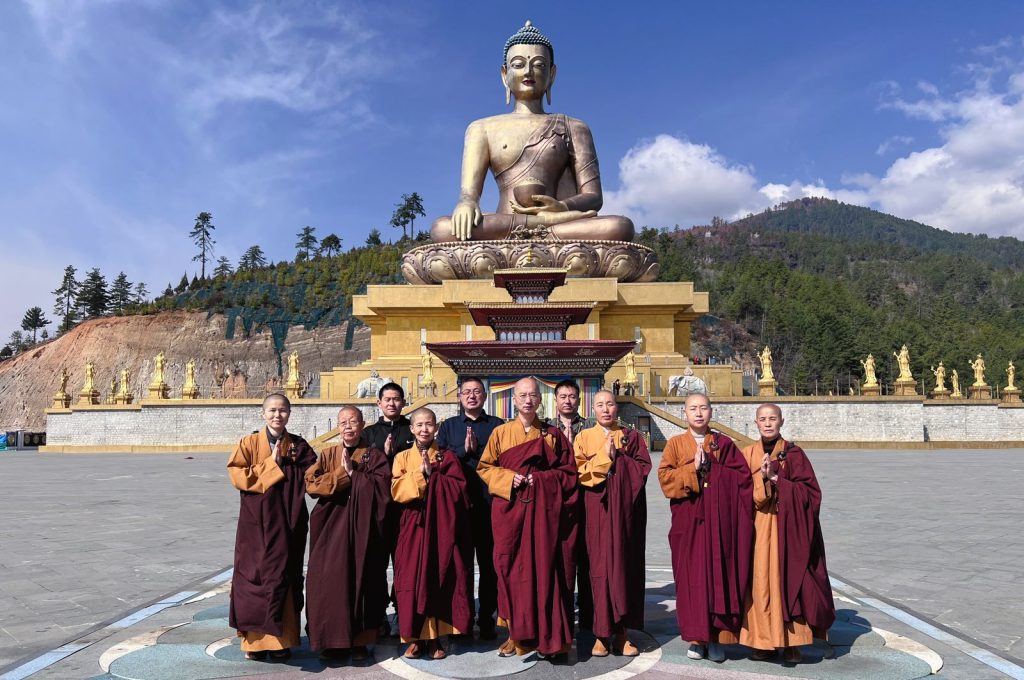Upper Dolpo Trek
Trip Introduction
The Hidden Kingdom -Upper Dolpo is a high-altitude region of mid-western Nepal, Karnali province bordering Tibet to the north. It falls within Nepal’s restricted area. You will be able to appreciate the natural and cultural riches of the lower and inner Dolpo regions which have been undisturbed by the outside world. It is part of the Shey-Phoksundo National Park. It is influenced by Tibetan culture because it borders Tibet. Upper Dolpo trekking is on every trekker’s bucket list.
The remarkable beauty of the diversified terrain, High pass pathways, Blue Shey Phoksundo Lake, Old Shey Gompa, Bon Gompa, Yanjer Gompa, and ancient Buddhist Bon religion are the main highlights of the Dolpo trek. Upper Dolpo is the homeland of Snow leopard, blue sheep, and Yak grazing highland. Dolpa is the most famous place to find one of the most expensive medicinal herbs- Yarsagumba (Cordyceps Sinesis). The trail follows an ancient Trans-Himalayan trade route. People with Bon religion are found here. The Dhaulagiri range surrounds the south and east, while Mt. Sisne and Kanjiroba border the west and Tibetan Plateau to the north.
The thrilling trek begins with a flight from Kathmandu to Nepalgunj and Juphal. We will begin our trek in Juphal and walk to the wonderful settlements of Dunai, Chhepka, and Chunuwar. From Chunwar, we will depart for the high altitude and deepest lake, Shey- Phoksundo Lake, passing through the Shey Phoksundo National Park and the beautiful Himalayan ranges over the rocky trail. You will travel to Shey Gompa, Kang La Pass, Sela La, and Chhoila La, from which you will have an amazing view of the snow-capped mountains. The trek will then take you to the remote valleys of Dho and Tarap, as well as the highest settlement valley in the world, before concluding in Juphal.
Itinerary
Departure from : Kathmandu, Nepal
Arrival On : Kathmandu, Nepal
Day 1
Arrival at TIA Kathmandu
| Days | Activities | Duration |
| 1. | Arrival at TIA Kathmandu (1,400m/4,592ft) | |
| 2. | Half-Day Trek preparation and Fly to Nepalgunj (150m/490ft) | |
| 3. | Fly to Juphal (2,500m/8,200ft) and Trek to Dunai (2,850m/9,350ft) | 3-4hrs |
| 4. | Trek from Dunai to Chhepka (2,687m/8,815ft) | 5-6hrs |
| 5. | Trek from Chhepka to Chunuwar (3,000m/9,580ft) | 6-7hrs |
| 6. | Trek from Chunuwar to Shey-Phoksundo Lake (3,600m/11,811ft) | 5-6hrs |
| 7. | Acclimatization Day at Shey-Phoksundo Lake (3,600m/11,811ft) | |
| 8. | Trek from Shey-Phoksundo Lake to Sallaghari (3,630m/11,910ft) | 5-6hrs |
| 9. | Trek from Sallaghari to Nagdalo La High Camp (4,717m/15,480ft) | 5-6hrs |
| 10. | Trek from Nagdalo La High Camp to Shey Gompa (4,500m/14,770ft) Via Nagdalo La Pass (5,350m/17,552) | 5-6hrs |
| 11. | Trek from Shey Gompa to Namgung Gompa (4,360m/14,310ft) via Shey La Pass (5,100m/16,740ft) | 6-7hrs |
| 12. | Trek from Namgung Gompa to Saldang (3,770m/12,370ft) | 4-5hrs |
| 13. | Acclimatization Day at Saldang and Hike to Yanjer Gompa (4,590m/15,060ft) | 4-5hrs |
| 14. | Trek from Saldang to Komash Village (4,060m/13,320ft) | 6-7hrs |
| 15. | Trek from Komash Village to Shimen (3,580m/12,630ft) | 5-6hrs |
| 16. | Trek from Shimen to Tinje (4,110m/13,490ft) | 5-6hrs |
| 17. | Trek from Tinje to Yak Kharka (4,040m/13,260ft) | 4-5hrs |
| 18. | Trek from Yak Kharka to Tokyu (4,240m/13,910ft) | 4-5hrs |
| 19. | Trek from Tokyu to Dho Tarap (3,944m/12,940ft) | 4-5hrs |
| 20. | Trek from Dho Tarap to Nawarpani (3,475m/11,400ft) | 5-6hrs |
| 21. | Trek from Nawarpani to Laisicap (2,775m/9,110ft) | 5-6hrs |
| 22. | Trek from Laisicap to Dunai (2,850m/9,350ft) | 5-6hrs |
| 23. | Trek from Dunai to Juphal (2,500m/8,200ft) | 2-3hrs |
| 24. | Fly Back to Kathmandu (1,400m/4,592ft) | |
| 25. | Departure |
Upon arrival at Tribhuvan International Airport (TIA). Our agent will greet you and accompany you to the hotel. Drive to the hotel and check-in. Our guide will come to see you in the evening and give you a brief overview of the journey. At the hotel, we had dinner and stayed the night.
Day 2
Half Day Trek preparation and Fly to Nepalgunj
Today, after breakfast, you will have a briefing with your guide. Your guide will provide you with important trek information. After that, you will pack your belongings for the trek and rest for a while. After lunch, you will be transferred to the airport for your flight to Nepalgunj. On arrival at the airport, our representative will transfer you to the assist in Check-in Process. Dinner and Overnight at the Hotel.
Day 3
Fly to Juphal and trek to Dunai
Today, after breakfast, you will board an early morning flight from Nepalgunj to Juphal. The flight lasts 40 minutes long. The scenic flight with the spectral mountain ranges will be enjoyable for you. After landing in Juphal, you will take a half-hour break before beginning your short hike toward Dunai. Your adventure officially begins today. You’ll be walking for 3 to 4 hours. The village of Dunai is located on the banks of the Bheri River. Dinner and Overnight at the Teahouses.
Day 4
Trek from Dunai to Chhepka
Today, after breakfast, we will begin our journey to Chhepka. We will walk through dense forest to Sulighat, where we will obtain the permit to enter Shey Phoksundo National Park. From there, we’ll head uphill toward the Thuli Bheri Valley. We’ll eat our lunch on the way. We’ll walk along the Phoksundo River to Kagbeni from there. We’ll be walking for 5 to 6 hours. It is a half-hour walk from Shyanta village to Chhepka village. Dinner and Overnight at the Teahouses.
Day 5
Trek from Chhepka to Chunuwar
Beginning our day with Tibetan breakfast, we’ll leave for Chunuwar. The trail travel through pine forests and some bushes. The popular lower Dolpo circuit trail will be followed. To get to Rechi, we’ll have to cross Phoksundo Khola twice. We’ll stop for lunch on the way. The path continues, and we will cross the bridge; it will take us two hours to get to Chunuwar, where there is an Amchi Hospital in which doctors practice traditional Tibetan medicine. Dinner and Overnight at the Teahouses.
Day 6
Trek from Chunuwar to Shey-Phoksundo Lake
After breakfast, we’ll leave for our favorite destination, Shey-Phoksundo Lake. It will be an exciting day as we make our way to the world’s deepest lake. Before arriving in Polam Village, we will travel through Cedar Forest. We’ll stop for lunch on the way. From there, we’ll gradually climb uphill to Phoksundo Lake. On the way, we will see Nepal’s highest waterfall, Suligad or Phoksundo. A small part of turquoise-colored Shey- Phoksundo lake can be seen from the Jharana viewpoint along with the waterfall. From there, we’ll take an uphill walk to reach the Tibetan Buddhist settlement village of Ringmo which is just at the bank of Shey- Phoksundo Lake. Dinner and Overnight at the Teahouses.
Day 7
Acclimatization Day at Shey-Phoksundo Lake
Today is our acclimatization Day at Shey-Phoksundo Lake. Begin your day with a delicious Tibetan breakfast. Your trip is not complete unless you explore Shey-Phoksundo Lake. We will walk around the majestic turquoise lake with a view of Kanjirowa. Enjoying its beauty, we will explore the area around Tshowa Monastery, which is 900 years old. Exploring the monastery, we will hike up to Shey- Phoksundo. After that, we’ll have lunch. Following lunch, we will proceed to Phoksundo viewpoint, which is located at an elevation of 3,890 meters and offers a panoramic view of the lake. Next, you can wander around Ringmo Village and learn about its unique Bon Culture. Dinner and Overnight at the Teahouses.
Day 8
Trek from Shey-Phoksundo Lake to Sallaghari
We’ll leave for Sallaghari after breakfast. We’ll be traveling through a lovely forest. We will hike in a remote area of the Dolpo region. We’ll stop for lunch on the way. The wonderful Sallaghari surrounded by pine forests is only a few hours away from the Phoksundo Khola camp. Dinner and Overnight at the Teahouses.
Day 9
Trek from Sallaghari to Nagdalo La High Camp
After breakfast today, we will depart for Nagdalo La High Camp. We’ll be walking northward. We will ascend the narrow trekking trails while admiring the stunning view of snow-capped mountains. We’ll cross the river via the bridge. We’ll stop for lunch on the way. After hours of climbing up the hillside, we will be rewarded with an incredible view of Nagdalo La High Camp. Dinner and Overnight at the Teahouses.
Day 10
Trek from Nagdalo La High Camp to Shey Gompa via Nagdalo La Pass.
Today will be a memorable day of our trek because we will be trekking one of the high passes in the Dolpo region. After breakfast, we will move to Shey Gompa via Nagdalo La Pass. It is not an easy pass, and you should be mentally prepared for it because we have the best view of the Dhaulagiri range. We’ll stop for lunch on the way. We will enter the Inner Dolpo region after crossing the path, and then descend to Shey Gompa. The village is decorated with Mani stone and Chorten. We will explore the area around the Crystal Monastery, which is located at the base of Crystal Peak, after arriving at Shey Gompa. Dinner and Overnight at the Teahouses.
Day 11
Trek from Shey Gompa to Namgung Gompa via Shey La Pass
After breakfast today, we will travel to Namgung Gompa via Shey la Pass. We’ll be walking for 6 to 7 hours. We will be treated to a breathtaking view of snow-capped mountains. We’ll eat our lunch on the way. We will trek for up to two hours to reach Sephu Khola. From there, we’ll take the trail to Namgung Gompa, where we’ll be able to see Kanjiroba, Kagmara, and Riu Dhukta. Dinner and Overnight at the Teahouses.
Day 12
Trek from Namgung Gompa to Saldang
We’ll leave for Saldang after breakfast today. We’ll be walking for 4 to 5 hours. We will cross the Namgung Khola and walk steeply uphill to reach the beautiful village of Saldang. We’ll stop for lunch on the way. We will learn about the Amchi tradition as well as Buddhism. Dinner and Overnight at the Teahouses.
Day 13
Acclimatization Day at Saldang and Hike to Yanjer Gompa
Today is Hike Day, and after breakfast, we’ll hike up to Yanjer Gompa. We’ll be walking for 4 to 5 hours. We’ll be walking alongside the Nagao Khola. The path ascends and descends gradually. We’ll pass through several small villages, including Tiling and Kigaon. In a few hours, we will arrive at Yanjer Gompa, an ancient Bon-Po Monastery. Return to Saldang after exploring the Gompa and village. Dinner and Overnight at the Teahouses.
Day 14
Trek from Saldang to Komash Village
We’ll leave for Komash Village after breakfast today. We’ll take a walk along the Raphya River. The path travels past small stupas, Mani walls, and Chortes. We’ll stop for lunch on the way. After hours of walking on the steep trails, we will arrive at the Tibetan village of Komash. Dinner and Overnight at the Teahouses.
Day 15
Trek from Komash Village to Shimen
We’ll leave for Shimen after breakfast today. We’ll be walking for 5 to 6 hours. We will see a landscape similar to that of the highland desert. We might also see some rare animals, such as a snow leopard or a blue sheep. We’ll eat our lunch on the way. We will enjoy the trail with its beautiful mountain views. When you arrive in Shimen, you can visit another ancient monastery. Dinner and Overnight at the Teahouses.
Day 16
Trek from Shimen to Tinje
We’ll leave for Tinje after breakfast today. We’ll be walking for about 5 to 6 hours. We will pass through Shimen and Pu Gompas. We’ll walk next to the Panjyan Khola. We’ll stop for lunch on the way. We’ll continue walking toward Taragaon and then Tinje. Dinner and Overnight at the Teahouses.
Day 17
Trek from Tinje to Yak Kharka
We’ll leave for Yak Kharka after breakfast today. We will be walking for approximately 4 to 5 hours. We will pass through the village of Chhamdang. We will pass the trail along the Panjyan and Chholtam rivers. We will cross the Thalum Khola Bridge. We’ll arrive at Yak Kharka, where there will be yak grazing on the ground. Dinner and Overnight at the Teahouses.
Day 18
Trek from Yak Kharka to Tokyu
We’ll leave for Tokyu after breakfast today. We will begin the trek by crossing the Sulun Khola Bridge. We will arrive in Chhoila North after crossing several small streams. As we near the top of the pass, we will be treated to breathtaking views of the Dolpo regions and mountains. We’ll stop for lunch on the way. To get to Tokyu gaon, we’ll walk on a remote trail. Dinner and Overnight at the Teahouses.
Day 19
Trek from Tokyu to Dho Tarap
We’ll leave for Dho Tarap after breakfast today. We’ll be walking for about 4 to 5 hours. We’ll be traveling through a variety of terrain. We’ll be walking downhill on flat ground. Walk along the riverbank. We’ll stop for lunch on the way. After a few hours, we will arrive at the world’s highest settlement, Dho Tarap. Dho Tarap is the most ancient village in Dolpa. Dinner and Overnight at the Teahouses.
Day 20
Trek from Dho Tarap to Nawarpani
We’ll be leaving for Nawarpani today. We’ll be walking for 5 to 6 hours. We’ll walk downhill, passing through Tarap Khola and Mirububane Khola. We’ll eat lunch on the way and then continue our walk. Before arriving in Nawarpani, we will pass through Sisaul, Ghyamghar, and Toltol. Dinner and Overnight at the Teahouses.
Day 21
Trek from Nawarpani to Laisicap
We’ll leave for Laisicap after breakfast today. We’ll descend and walk along the Tarap River. We’ll be walking for 5 to 6 hours. We’ll be walking through the woods. We’ll stop for lunch on the way. We’ll continue along the Tarap Khola until we reach Laisicap. Dinner and Overnight at the Teahouses.
Day 22
Trek from Laisicap to Dunai
We’ll leave for Dunai after breakfast today. We’ll walk alongside the Thuri Bheri Khola. We’ll be walking for 5 to 6 hours. To get to Tarakot, we’ll cross the bridge. We’ll stop for lunch on the way. We will continue ascending along the river until we reach the plain trails. To get to Dunai, we’ll cross the Hanging Bridge. Dinner and Overnight at the Teahouses.
Day 23
Trek from Dunai to Juphal
We’ll leave for Juphal after breakfast today. We will return to the trek’s starting point. We’ll be walking for 2 to 3 hours. We’ll be walking on a plain route. We’ll take a stroll along the Thuli Bheri River. We’ll make our way through the terraced field until we reach Juphal. Dinner and Overnight at the Teahouses.
Day 24
Fly Back to Kathmandu
After breakfast today, we’ll board an early morning flight to Nepalgunj. We’ll take another flight from Nepalgunj to Kathmandu. When you arrive at the airport, you will be transferred to the hotel and assisted with check-in. After that you are free to do whatever, you choose with your day. You are free to walk through Thamel and Basantapur streets as much as you wish. Enjoy a complimentary farewell supper at a traditional Nepali restaurant later that evening.
Day 25
Departure
The 24-day journey has concluded Today is your last day in Kathmandu. Our representative will have a short discussion on the trip and take your feedback after a hearty breakfast. Following this session, he will drive you to the airport in our private transportation 3 hours before your trip.
Route Map
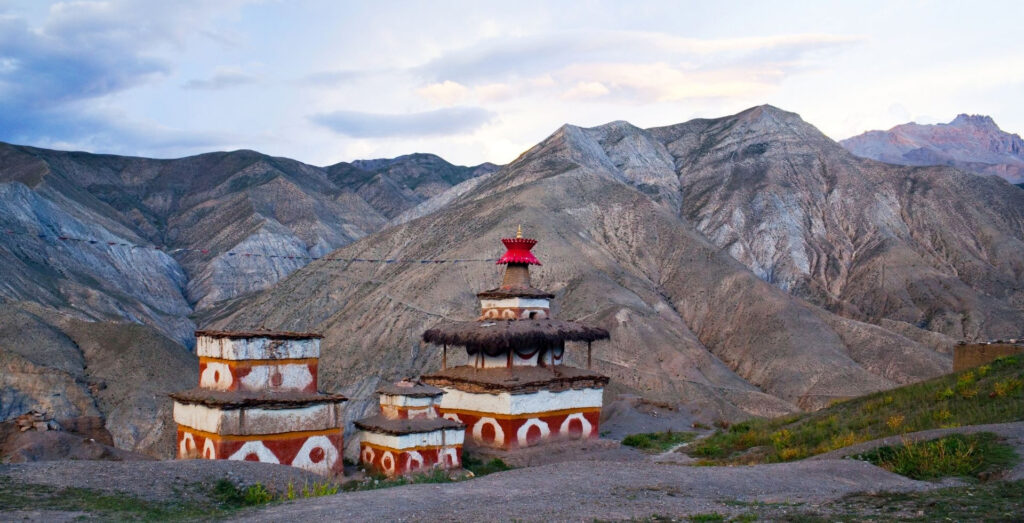
Altitude Map
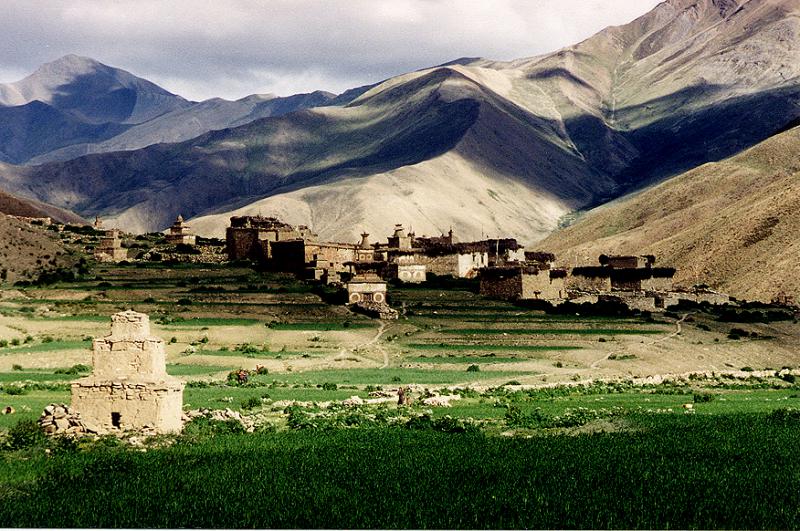
What's Included
- Arrival & Departure: Airport – Hotel transfer – Airport (Pick Up and Drop on private basis).
- Hotel Accommodation in Kathmandu: 2nights at Star categories hotel on twin sharing and BB basis.
- Welcome Dinner and farewell dinner at Nepali culture restaurant in Kathmandu.
- Food & Lodging: 3 meals a day (Breakfast, Lunch, Dinner) along with accessible accommodation sharing during the trek.
- Permit: All necessary paper works: Shey Phoksundo National Park Permit, Lower and Upper Dolpo Restricted Area Trekking permit, and TIMS Card.
- All government and local taxes if necessary.
- Trekking Map: Upper Dolpa Trekking map.
- Member transportation: – Air Transportation: Flight from Kathmandu – Nepalgunj, Nepalgunj to Juphal and while returning.
- Drinking: 2 liters of boiled water to carry on thermos per day per member.
- Guide: Government licensed Guide (English speaking) during the trek
- Porter: Porters (2 trekkers: 1 porter) up to 15kg during the trek.
- Insurance: Insurance for all involved Nepalese staff during the trek.
- Comprehensive Medical kit.
What's Not Included
- Air Fare: International flight airfare (from and to Kathmandu).
- Nepal Tourist Visa fee.
- Extra night in Kathmandu: Extra nights’ accommodation in Kathmandu. In case of early arrival or late departure, early return from Trekking (due to any reason) than the scheduled itinerary.
- Personal Insurance: Travel and high altitude insurance, accident, Helicopter medical & emergency evacuation. *Mandatory
- Personal Expenses: Telephone calls, Internet, Toiletries, battery recharge, hot shower, laundry, soft drinks, beer, and any alcoholic beverages.
- Personal Equipment: Clothing, Packing Items or Bags, Personal Medical Kit, Personal Trekking equipment.
- Rescue Evacuation: Medical and emergency rescue evacuation costs if required. (Rescue, Repatriation, Helicopter, Medication, Medical Tests and Hospitalization costs).
Equipment List
What to bring ?
General
Tailor Your Holiday
Everyone has their own preferences in terms of destination, journey time, and budget. As a result, sticking to our plan isn't necessary. We will create a personalized itinerary for you that includes accommodations, transportation, meals, and tour guides. We guarantee you the best Tailor-made Package because this is your trip. You have the option to personalize it, as your liking. Let us Plan together to make your Vacation worth it.
Fixed Departure
Why Travel With Us?
Secure Online Payment, No Credit Card Fee
24/7 International Support
Travel with Locals. Support Locals
Support Local Communities & Donate to Charity
All Inclusive Price
Private & Tailor-Made Trips
Lifetime Deposit
Secure Online Payment, No Credit Card Fee
Trip Facts
| Country | Nepal |
| Duration | 27 Days |
| Maximum Altitude | 5,350m/17,552 |
| Region | Dolpo |
| Meals | Breakfast, Lunch, Dinner |
| Accommodation | Hotel, Lodge, Teahouses |
| Grade | Challenging |
| Best season | Mar, Apr, May, Sep, Oct, Nov |
Trip Highlights
- Scenic Flight to Juphal.
- Trek in the Shey Phoksundo National Park is the only trans-Himalayan National Park in Nepal.
- Witness endangered animals like Snow leopard, Tibetan sheep, Goral, Himalayan Black bear, etc.
- Explore the beautiful Shey Phoksundo Lake.
- Visit the holy Buddhist place Shey Gompa.
- Experience the Unique Bon Buddhist Culture.
- Visit the ancient village Dho Tarap.
- Experience the highest waterfall in Nepal, Sulighat Waterfall.
Is this trek appropriate for you?
- The Upper Dolpo Trek is the Challenging Trek. You can easily complete this trek if you are physically and mentally prepared and willing to do so.
- You will be Trekking for 21 Days. The Path can be completed in as little as 2 hours as much as 7 hours.
- The walk is not tricky, there is no Climbing or Scrambling but the path is rocky and hilly.
- Each day you will cover 200 to 400 meters in height while trekking. The highest point in the trek you will reach on the trek is 5,350m.
- The weather and Remoteness of this trek, as well as dealing with the high altitude, require a slow pace and the need to stay hydrated.
The ideal season to travel
Spring
March: The month of March is ideal for trekking and admiring the spectacular mountain peaks. Upper Dolpo will be crowded with hikers beginning in March. In the Dolpa district, the spring season begins in March, the month of the Rhododendron. Trekking in March will provide you with the most memorable experiences in a pleasant and mild climate. At lower altitudes, the weather is not particularly hot, and at higher altitudes, it is not particularly cold. The views of the mountains are spectacular, and the trail is excellent. Nature can be experienced at its most beautiful.
April: April is the beginning of spring in Nepal, and the weather is ideal for trekking to Upper Dolpo. The views are bright and clear at this time of year, and everyone enjoys spring. The surroundings are vibrant and colorful, with rhododendrons in bloom. It is the best time of year to see various bird and butterfly species. During your April trip to Upper Dolpo, the weather is completely in your favor. The moderate heat of the sun, combined with the lack of wind, makes it ideal for trekking. Furthermore, the amount of rain and snow is insignificant.
May: May, the final month of the spring season in Nepal, is much hotter. The Upper Dolpo trek in May has the highest temperature of the year. Temperature and weather will vary depending on the altitude throughout the trek. During the day, the weather in the lower sections will be extremely hot. The nights, on the other hand, are tolerable.
Summer
June: June is the coldest time of the summer and has the least amount of rainfall. The month of June is the offseason and therefore less popular for trekking. In the region, June marks the start of the wet monsoon season. The weather is slightly humid, and you can enjoy nature while it is wet and cool. If you enjoy the rain, rainbows, and less crowded trails, this is the month for you. During this month, the air begins to become humid due to continuous rain.
July: Trekking in Nepal in July isn’t always joyful because the heavy rains can block your view of the beautiful mountains you’ll pass through. In July, you will notice that the temperature is not as chilly on the Upper Dolpo. As the rain washes away the dust and pollution, the environment opens up and becomes very fresh, and you will be able to enjoy nature despite the chilly weather.
August: In the Upper Dolpo, August is the off-season for trekking. In August, the monsoon season produces strong rains, especially in lower places. Due to weather-related concerns, most hikers avoid this month. The summer monsoon season comes to an end in August. It rains regularly, and you may feel a little chilly as a result. You should also be cautious because the trails are slippery and the possibility of landslides and avalanches is considerable.
Autumn
September: The monsoon season finishes in September, marking the start of the fall season. The optimum time to trek to Upper Dolpo is in September. The weather and temperature for the Upper Dolpo Circuit Trek are ideal. The temperature is pleasant during the day, but it is extremely chilly at night.
October: October is the month that falls between September and November. As a result, it keeps both monsoon rain and winter’s biting cold at distance. The weather is warm and pleasant in October, with clear skies and fresh air. The nights, on the other hand, are a little chilly, with a brisk breeze coming from the campsite. Throughout October, the weather is pleasant, allowing people to enjoy an unobstructed view of the snow-capped peaks. They can also visit bright valleys and interesting scenery of various colors.
November: The last declared peak season for trekking in Nepal is November. Bright, sunny days and beautiful skies characterize November. On the treks, these provide breathtaking, crystal-clear vistas of the mountains. The days are bright and sunny in November. The sky is clear, with perhaps a few stray clouds possible.
Winter
December: In Dolpa, December is a rather dry month. It receives fewer than 25 millimeters of rain every year. Dolpo is in the shadow of the Himalayas. As a result, December has a lower chance of rain. It is also possible to walk the Upper Dolpo Circuit Trek in December. In December, hikers will get a unique perspective of the region.
January: In Nepal, January is in the midst of winter. The higher elevation receives moderate snowfall, whereas the lower elevation is ideal for trekking. During the day, you will feel warm, but as night falls, you will feel cold. In January, these areas receive little to no rainfall. As a result, the skies remain clear and the surroundings appear even sharper. The trails will be covered in snow, so you may need crampons to cross the pass.
February: The Upper Dolpo trek in February is an escape from the hustle and bustle of everyday life to a place where all you can see are mountains and scenery. It’s peaceful because February is the coldest month of the year. Most people dislike trekking in the winter because they believe it is extremely difficult.
Flight to Juphal
- Almost every trip begins with a flight from Kathmandu to Nepalgunj and from Nepalgunj to Juphal Airport. As it is the easiest way for your trek to the Upper Dolpo.
- Kathmandu is 283 kilometers from Juphal Airport. The domestic airport of Juphal is located in Thuli Bheri, Dolpa District.
- The airport is located at a height of 2,499meters above sea level. It only has one runway.
- The flying time is around 45 minutes. During the monsoon season, flights are frequently delayed or canceled.
- The flight only operates from Nepalgunj airport.
Altitude sickness
Beyond 2,500m (8,000ft), Altitude sickness is a sneaky monster that may attack even the fittest trekkers. These demands do everything in your power to prepare for altitude trekking and take things carefully throughout your Upper Dolpo journey. With increasing altitude, the amount of available oxygen decreases, which is the primary cause of high-altitude sickness.
So, you may suffer from different altitude sicknesses at the altitude of 5,350m i.e., Acute Mountain sickness (AMS), High pulmonary edema (HAPE), High-altitude cerebral edema.
Your body requires time to adjust to thin air, so start at a lower altitude and work your way up. Some of the symptoms of Altitude sickness are:
- Increased breathing.
- Increased urination.
- Restless sleep.
- Periodic breathing at night because of altitude.
- Shortness of breath.
- Extreme fatigue.
- Respiratory failure.
- Cerebral edema.
Certain care should be made to ensure that the situation does not worsen. However, if the symptoms worsen, you may need to return to a lower height and seek medical help. There are, however, several other precautions you may take while trekking to lessen your risk of altitude sickness.
- Trekkers can modify their bodies by slowly and gradually climbing, as our bodies require time to adjust to the oxygen level. For high altitude trekking, at least one day of acclimatization rest is essential, and you should ascend as high as possible before returning to a lower altitude for the night.
- You should do various strength training exercises such as running, cycling, jogging, push-ups, and going to the gym to acquire strength and stamina for your adventure.
- As the air gets increasingly thin, an increase in elevation reduces oxygen levels, and in the Everest region trek, an increase in altitude also means less vegetation. The consumption of alcoholic beverages, cigarettes, and tobacco decreases the body’s water content.
- The greatest remedy is to always stay hydrated. On your walk, instead of drinking cooled water, drink warm water.
- Diamox is the most effective altitude sickness medication; thus, you should bring a subscription with you on the trek. However, you should consult with your physician to see whether it is advantageous.
Things to know before traveling to Upper Dolpa.
Drinking-Water in Upper Dolpo.
Especially for trekkers, it is very necessary to hydrate your body at a higher altitude than in lower elevations to avoid dehydration and altitude sickness. Lack of fluid can be the main hindrance during the trek. You should hydrate your body with at least 3-4 liters of water daily (Tea, soup, or normal drinking water).
The Dolpo region is an isolated area of Nepal. Upper Dolpa is still a long way far from being developed. The stream water is also far from the village area (Upper Dolpa) which is also polluted. Stream water is also available on the trail. Stream water far from the human settlement might be safe to drink, but we recommend you not have it without purifying. As a result, finding water sources and safe drinking water will be difficult during your trek to Upper Dolpo.
Besides that, the only places to get drinking water are local teahouses and lodges, but it is also unsafe to drink without being purified or boiled. The teahouse sells boiled drinking water. Coldwater is provided free of charge in teahouses, but for boiled water, you have to pay a certain amount.
We recommend you bring a Reusable water bottle of 2-3ltr or a water pouch favorable for both hot and cold water.
Here are some ways that you can use to make the water drinkable.
- Boiled water
Boiling water is the best way to purify the water. As we are climbing to a higher altitude you need to boil the water for about 3-minute and season it with a pinch of salt before drinking. You can get free tap water in the teahouse but for boiled water, it cost around 1-2$ per liter and 3$- 10$ for a large pot.
- Purification tablets or electrolyte powder.
Purification tablets like chlorine or iodine tablets are commonly used tablets by trekkers to disinfect the water. 1 tablet is enough for a liter of water. It takes around 30 min for the tablets to dissolve and become drinkable. Water, purified by tablets may leave a taste in your mouth.
Electrolyte powder is another option. Electrolyte powder is a better way to purify water than tablets because electrolyte powder contains minerals such as salt, Potassium, Magnesium, which are important for your body during the trek.
- UV Light water purifier/ SteriPEN.
It is a simple, effective, economic, and environment-friendly way to purify water. It kills the bacteria and virus within 10 sec by exposing them to ultraviolet light using Steripen, without changing the flavor of the water. This is a highly recommended means of purifying water.
Electricity and Internet facility at Upper Dolpa.
Electricity facility.
Due to the remoteness of this region, electricity is still a dream of many villages of Dolpo District. Most of the village still relies on kerosene lamps, solar panels, or solar power battery electricity with is enough to light the bulbs for the rooms and charge small devices. There will be no charging socket in your room. You might be able to charge a normal mobile set or power bank from the solar power battery. The solar battery might harm your device, so you have to charge it at your own risk. As a result, it is recommended that you bring a power bank that will last the duration of your trek.
Internet Facility and Network Service
World link Communication has been providing internet facilities in the Dolpa district. But it also lacks a stable connection due to the high altitude. There is free Wi-Fi in Shey- Phoksundo.
NTC mobile service has been providing network service in Dolpa, but you might lose connection on some parts of Dolpa especially in Upper Dolpo. Buy the NTC sim card from the stores in Kathmandu for 1$. By taking data packages from NTC you might access the internet, only when the mobile network catches a signal. It is not guaranteed that your mobile network will catch the signal during the trek. A satellite phone is the best option for communication.
Some of the villages along the trekking route might have telephones. From it, you can make an international call but you have to pay money on a minute basis. Or you can buy a satellite phone.
| Buy NTC data package
Dial*1415# |
Cost of data package in NTC:
-14GB=7$ (Valid up to 28days -30GB=15$ (Valid up to 90 days) |
Check balance
Dial *1415# |
Document needed to buy a sim card.
For foreigner = 1 passport size photo, Passport photocopy, or valid identity card.
For Nepali = 1 Passport size Photo, Photocopy of Citizenship.
Some useful tips to avoid the problem of lack of electricity in the trek.
- Extra batteries for the camera.
- Power bank with 5000-10000mAh.
- The solar charger and solar lamp (LuminAID Nepal lamp)
- As possible less usage of a device with low brightness, GPS, and airplane mode.
Essential Backpack items for Upper Dolpa Trek.
The bag of a trekker also reveals the trekker’s level of experience. A good trekker should be a smart backpacker. You should be pre-prepared for the things that you need in the trek. As this trek is in a remote area, there are no shops once you leave the road, so need to bring enough supplies that you need in the trek.
Here are some of the things that you need to take with you for the trek.
Travel documents
- Airline tickets with the itinerary.
- Travel insurance policy documents.
- Valid passport.
- Copies of passport.
- Passport-sized photos.
- Nepalese cash.
- Travel permits.
Clothing
- A pair of waterproof trekking shoes or hiking boots.
- A pair of flip flop slippers or running shoes.
- 2-3 sets of thermals (leggings and tops)
- 3-4 pairs of hiking long sleeve shirts or tops.
- 2-3 pairs of hiking shorts and pants.
- 2-3 fleece jumpers or a set of tracksuits.
- Good quality windproof down jacket.
- Lightweight waterproof rain jacket and pants.
- Neck gaiter, leg warmer, and packet of pocket hand warmers.
- 5-6 pairs of quick-dry socks, underwear, and sports bra.
- Pair of inner and outer gloves.
- Knitted Hat, sun cap, beanie, or bandana.
- Glacier Sunglasses and eyeshade.
Trekking equipment
- Waterproof trekking bag of 40-50liter and Rucksack of duffel bag (if your backpack is not enough for all your item and need a potter).
- Reusable water bottle (both hot and cold) of at least 2-3litre.
- A sleeping bag and sleeping bag liner.
- Trekking stick/ poles.
- Route Map of Upper Dolpo.
- Crampons (if you are trekking in the winter season, Dec-Feb).
- LED Headtorch or solar lamp (LuminAID Nepal lamp is best as it is solar-charged and very much portable)
- Stuff sacks, plastic bags.
- Plug adapter, Charging appliances, power bank, batteries.
- Pocket knife.
- Travel Wallet.
Toiletries
- Rolls of Toilet paper, wet wipes, and tissue.
- Medium-sized quick-drying towel.
- Toothbrush and toothpaste.
- Hand sanitizer.
- Sunscreen, lip balm, body lotions.
- Portable mirror.
- Shampoo and soap.
Personal First Aid Kit
- Antibiotics
- Painkillers, Paracetamol, ibuprofen, aspirin, Nicole
- Sanitary pads
- Anti-inflammatory spray.
- Anti-Nausea tablets.
- Anti-diarrhea pills or power.
- Altitude sickness tablets- Diamox
- Water purifying tablets or electrolyte powder.
- Mosquito and Insect Repellent.
- Salt or anti-leech oil (If traveling in the rainy season, July- Aug)
- Earplugs
You can buy or hire trekking clothes and equipment in Kathmandu. If you are buying it, you have to allow an extra day for shopping; however, if you are hiring it, you must inform us in advance so that we can arrange it before you arrive in Kathmandu. This way you can reduce the weight of your luggage and save time and money.
Branded, New as well as fake, and used trekking clothes and equipment are available around the Thamel area at a reasonable price.
Accommodation, Meal, and Transportation
Accommodation
We will accommodate in star hotel during our stay in Kathmandu. In Nepalgunj and Dunai we will stay in Lodge.
From our stay from Chhepka until returning to Dunai we will accommodate in lodges or teahouses or homestay.
Meal
During the trek, we will provide you three-time meals. You can choose from the given menu.
Breakfast– Buckwheat Roti, Fini Roti, Tibetan Bread, Eggs, Boiled potato with Timurchutney, Tsampa porridge, Black salted tea, Yak Butter tea, etc.
Lunch– Dal Bhaat set (Rice, vegetable curry, meat/fish curry, Lentils/bean soup, Hemp seed Chutney, Gundruk Achar, Cucumber Salad), Maize/Millet Dhindo, Noodle soup, Garlic soup, Fried noodles, etc.
Dinner– Dal Bhaat set (Rice, vegetable curry, meat/fish curry, Lentils/bean soup, Timur Chutney, Gundruk Achar, Cucumber Salad), Maize/Millet Dhindo, Thukpa, Noodle soup, Garlic soup, Fried noodles, etc.
These are the options of food that you will find mostly in the trek to Upper Dolpo.
Transportation
By Bus- from Kathmandu airport to hotel at Kathmandu and vice-versa.
By Air- Flight from Kathmandu to Nepalgunj, Nepalgunj to Juphal and returning.
Guide and Staff Arrangements
Throughout the trek, all your activities will be handled by our well-qualified and professional staff. They will do all the escorting. As this is one of the hardest and tricky treks, we are providing you with a highly experienced and licensed guide with fluent English speaking and has excellent navigation and technique of rope fixing skills. They will accompany you from Kathmandu and guide you during the whole journey to Upper Dolpo. Each group of 4-5 trekkers will be assigned an assistant guide, as well as a porter for two trekkers (2*15kg =30kg). If your luggage weighs more than 15kg you will be provided a porter individually but you will be charged for 2 people.
All our lead guides, assistant guides, and potters are well professional and experienced. So, we hope for your respect and cooperation with them throughout the trek.
A typical day on the Upper Dolpo Trek
Every day will begin with the ringing of your alarm clock at 6 a.m. and a knock on your door from your guide with the invitation of breakfast. Get up, have Tibetan breakfast, pack your backpack and get ready to start your day’s walk by 7 a.m. We need to start our trek early to avoid the scorching sun and in the midafternoon the wind gets stronger compared to the morning in higher altitudes.
You’ll wander along the rugged trail enjoying the alpine and subalpine forest, grasslands, high passes; clicking photos; creating memories; interacting with your guide; hearing each other’s stories. Lunch will be served at a local teahouse in the afternoon. Having the flavorful Dal Bhat and an hour of rest, we will proceed to the day’s final destination as per the itinerary.
On arrival at the destination, check into your accommodation. Get freshen up and some rest. As every teahouse/lodge where we stay has a common dining area with a wood-burning stove in the center, there you will get to meet other travelers. You can sit there, laugh at each other stories, play cards, sing songs, play music, and have a good time. This will help you forget all the tiredness of the day. Later in the evening, you will have your dinner together. After dinner, your guide will give a short briefing about the next day’s trek regarding when you must get up when we have to start our trek the next day, where we will stay the next day, how many hours we have to walk, and so on.
During this 21-day trek to Upper Dolpo, you will walk for a minimum of 4 hrs to a maximum of 7 hrs in a day. You will have 2 scenic flights before starting and ending your trek. You will walk over the rocky trail of an alpine and subalpine forest, grasslands, and high passes. Snow leopard, Tibetan sheep, Goral, Himalayan Black bear are some of the endangered species you might encounter in this trek. During the acclimatization day at Shey- Phoksundo and Saldang hike over the viewpoints and visit the Buddhist Gompas. Every stop in the Upper Dolpa will be a wonderful day. You will get to learn the Bon Buddhist culture, see the ancient village at Dho Tarap, experience the highest waterfall in Nepal- the Suligad waterfall, and many more in this trek. Your hard walk will be paid off on completing the trek with lifelong memories.
Nepal Tourist Visa and permits details
Visa procedure.
To travel to Nepal, you’ll need a tourist visa that is valid for the period of your stay in Nepal. Better, if you have a tourist visa valid for at least 1 month because anything can happen during the trip and stay in Nepal after your visa expires would result in you paying a penalty. Apply for a visa at your nearest Embassy of Nepal or obtain an On-Arrival visa at immigration in Tribhuvan International Airport, Kathmandu. But it’s better to contact your nearest Nepalese Embassy.
Here are the documents that you need, to apply for the tourist visa.
- The Tourist Visa Application Form for Nepal (Fully completed online and printed)
- Original Passport with at least 2 blank pages and validity of at least 6 months.
- Photocopies of your passport’s personal information page.
- At least 2 recent passport-sized photos of yourself with white background.
- Proof of accommodation in Nepal.
- Valid travel and return flight tickets.
- A bank statement from the last 3 months with a minimum closing balance of NPR 2, 00,000.
- Receipt of the visa fee for Nepal.
Note: 15 days visa, costs USD 30. But our trip is for 25 days, so apply for 30 days tourist visa that costs USD 50. For 90 days visa costs USD125.
Entry permits and Requirements
Upper Dolpo is the controlled area of Nepal so you have to obtain some special permits to trek to Upper Dolpo. The Entry permits that you need for the trekking to Upper Dolpo are;
| Trekking permits | Foreign Nationals | SAARC nationals | Nepali citizens | |
| 1. | Shey Phoksundo National Park Permit | NPR 3000 per person per entry +13% vat.
(Approx. USD 34) |
NPR 1,500 per person per entry + 13% vat.
(Approx. USD) |
NPR 100 per person per entry + 13% vat.
(Approx. USD) |
| 2. | Lower Dolpo Restricted Area Trekking permit | USD 20 per person for the first week.
Additional USD 5 per day per person beyond 1 week. |
USD 20 per person for the first week.
Additional USD 5 per day per person beyond 1 week. |
-N/A |
| 3. | Upper Dolpo Restricted Area Trekking Permit. | USD 500 per person for the first 10 days.
Additional USD 50 per person per day beyond 10 days. |
USD 500 per person for the first 10 days.
Additional USD 50 per person per day beyond 10 days. |
-N/A |
| 4. | Trekker’s Information Management System
(TIMS Card) |
NPR 1,000 per person with a guide (GT) and NPR 2,000 for solo trekkers (FIT) | NPR 300 per person with a guide (GT) and NPR 600 for solo trekkers (FIT) | -N/A |
Note-Lower Dolpo and Upper Dolpo Restricted Area Trekking Permit have to be issued from the Department of Immigration of Nepal, Kalikastha, Dill Bazar, and Kathmandu. The permits will be ready within 2-3 hrs after the submission of documents.
Shey Phoksundo National Park Permit can be issued at the entry point of Shey Phoksundo National Park or Nepal Tourism Board, Bhirkuti Mandap, Kathmandu. But to save time get the Shey Phoksundo National Park Permit and TIMS Card from Nepal Tourism Board, Bhirkuti Mandap, and Kathmandu.
You cannot travel alone in a restricted area so, to issue both Lower and Upper Dolpo restricted area permits as well as TIMS Card, you need to apply from a local registered trekking agency with at least 2 members, accompanied by a licensed guide.
For more information about TIMS Card and Restricted Area Permit here is the link.
(If you are traveling from a travel/trekking agency your agency will arrange all the Permits.)
Documents required to get these permits.
- Complete the permit form with your passport details and tour details (Trekking area, Entry and Exit date, and point, Route of Trekking, Emergency contact information for Nepal and your Home country).
- Passport size photos.
- Original passport with a valid visa and Photocopies of passport personal information page.
- Copy of Travel Insurance policy to obtain TIMS card.
For Lower and Upper Dolpo Restriction Area Trekking Permit.
- A letter of guarantee from the tour operator.
- Letter from TAAN.
- Copy of your International flight ticket itinerary (Date of arrival in Nepal) and Trek itinerary.
- Copy of TIMS Card and Shey Phoksundo National Park permit.
- Copy of Company Registration Certificate, Tax Clearance Certificate, PAN Registration Certificate of the trekking company.
Travel Insurance
During the journey, you may encounter several unexpected incidents or losses. Trekking in Nepal is an adventurous and occasionally dangerous activity, especially at high altitudes. Trekkers must have travel insurance before visiting Nepal for trekking. During this 21-days trek to Upper Dolpa, you may encounter a physical injury, illness, or an unexpected accident, and you will be responsible for all medical expenses and losses.
Choose an insurance policy that covers all of your possible risks from the start of your journey to your final destination. The following threats should be covered by your travel insurance:
- Cancellation of Domestic and International flights.
- Lost and stolen baggage and passport.
- Hospital and Medical expenses (physical injury, Acute Mountain sickness, Altitude sickness, sudden accident)
- Emergency rescue such as Helicopter.
- All high-altitude trek dangers up to 5,500m.
You need to choose your travel insurance wisely so that, in the case of such an incident, your travel insurance will cover the costs.
You can get your travel insurance in your home country of Nepal.
Responsible Travel
Upper Dolpo is the restricted/controlled area of Nepal. The village in Upper Dolpo is isolated and soaked in Sherpa/ Tibetan culture, tradition, and lifestyle which is completely different and unique from others. You will be able to experience the typical lifestyle of Sherpa and Tibetans as well as their Bon culture, which has been practiced from many years ago.
So, you have to respect the local people, their local culture and tradition as well as nature and environment. You can help them by using local products and services. You can learn some Nepali greetings words to greet them respectfully. For example, “Tashi Delek” means Goodluck/Blessings. While walking along the rugged trail, you must maintain a peaceful attitude. We expect you to properly dispose of your plastic garbage (food wrappers, plastic water bottles).
Upper Dolpa is a restricted area, so you must obtain permits from the Nepalese government to trek through it. Upper Dolpo is a remote trekking destination, so the infrastructure in this area is not developed. Your one small negative activity can make a big impact on them and their daily life.
Your responsible travel will help Nepal achieve long-term sustainable tourism.
FAQ’s
Why do Upper Dolpo Trek?
Upper Dolpo Trek is one of the adventurous treks to the remotest area and restricted areas of Nepal. You will have lots of fun, adventure, and get to experience a lot i.e., Wide angle view of Dove- white Himalayans, lush grasslands, Gushing rivers and streams, typical Sherpa- Tibetan’s scattered thin villages, Undisturbed Bon culture, delightful Tibetan cuisine, and so on. It is an adventurous as well as a cultural trek.
In how many days can we complete Upper Dolpo trek?
The Upper Dolpo trek can be completed in as short as 21 days too long as 27 days.
When is the best time to do Upper Dolpo trek?
Spring season (Apr-May) and autumn season (Oct -Nov) is the best time to do the Upper Dolpo trek. The weather is warm and stable, the sky gets clear and you will get to see the alluring view of green landscape and snow-covered mountains.
But if are a snow lover, the winter season/January is the best time to travel because it is the early time of winter. You will get to experience light snowfall and the trail will be covered in light snow, making the walk easier.
Will I gain AMS during the Upper Dolpo trek, even if am a frequent trekker?
Acute Mountain sickness is the sneaky monster that sometimes attacks even the fittest trekkers beyond 2,500m (8,000ft). So, you can gain AMS during the
Upper Dolpo Trek beyond Chunuwar – Shey Phoksundo.
Even if you are a frequent trekker, sooner or later depending on your health condition and your previous trek altitude history, you might gain AMS. You might gain AMS much later than other newbie trekkers. So, you have to balance everything to make your body able to tackle altitude sickness. For that, you have to intake a sufficient amount of liquid and if needed acclimatize properly.
What is the Emergency medical facility/ availability in Upper Dolpo?
Even though Dolpa is a remote area, getting emergency medical treatment while trekking to Upper Dolpo won’t be a problem. There is an advanced hospital in Dunai. In Saldang, Dho and Charka there are primary hospitals as well as local health posts in Tinje, Phoksundo, Juphal. Because the road in Dolpo is rocky, the patient who needs medical treatment has to attend the hospital on foot, by porter, or on stretchers.
What is the available infrastructure for Upper Dolpo trek?
Transportation– To trek to Upper Dolpo you have to take 2 flights. From Kathmandu airport to Nepalgunj and Nepalgunj to Juphal, which is the starting point of the trek to Upper Dolpo.
Drinking water– Finding water sources and safe drinking water will be difficult during your trek to Upper Dolpo. Rivers is far from the village of Dolpo which is also polluted. Stream water is also available on the trail. Stream water far from the human settlement might be safe to drink, but we recommend you not have it without purifying.
Besides that, the only places to get drinking water are local teahouses and lodges, but it is also unsafe to drink without being purified or boiled. The teahouse sells boiled drinking water. Coldwater is provided free of charge in teahouses, but for boiled water, you have to pay a certain amount.
Accommodation– During your whole trek to Upper Dolpo you have to accommodate in teahouses.
Foods– You will get local food during this trek. The type of food you will find in this trek is-
For Breakfast– Buckwheat Roti, Fini Roti, Tibetan Bread, Eggs, Boiled potato with Timur chutney, Tsampa porridge, Black salted tea, Yak Butter Tea, etc.
For Lunch and Dinner– Dal Bhaat set (Rice, vegetable curry, meat/fish curry, Lentils/bean soup, Hemp seed Chutney, Gundruk Achar, Cucumber Salad), Maize/Millet Dhindo, Noodle soup, Garlic soup, Fried noodles, etc.
Electricity/ Network/ Internet – There is no access to electricity. The entire village relies on solar panel electricity and solar power battery, which is enough to light bulbs and charge small devices. NTC cellular service pole has been installed in Lower Dolpo. NTC cellular service has been providing the GSM mobile network, but it might not work in upper Upper Dolpo. You can use a satellite phone. World link internet service is available in the Dolpo district. Some will provide you free while some will charge you a certain amount. World link has provided free internet around Phoksundo.
What permits are required for the Upper Dolpo trek?
Shey Phoksundo National Park Permit, Lower Dolpo Restricted Trekking permit, Upper Dolpo Restricted Trekking Permit, and TIMS Card are required for Upper Dolpo trek.
Shey Phoksundo National Park Permit costs NPR 3,000 per person per entry + 13% vat for Foreign Nationals, NPR 1500 per person per entry + 13% vat for SAARC National and NPR 100 per person per entry + 13% vat for Nepali citizens.
Lower Dolpo Restricted Trekking permit costs USD 20 per person for the first week. Additional USD 5 per day per person beyond 1 week.
Upper Dolpo Restricted Trekking Permit costs USD 500 per person for the first 10 days. Additional USD 50 per person per day beyond 10 days.
TIMS Card cost NPR 1,000 per person with a guide (GT) and NPR 2,000 for solo trekkers (FIT).
Can we do the Upper Dolpo trek without a guide?
Except for Nepali citizen travelers, other travelers cannot trek to Upper Dolpo without a guide. Because every foreign traveler will need a TIMS card and Restricted Area permit to travel in this region. Secondly, the first requirement to obtain a TIMS card and Restricted Area Permit is you must be accompanied by a two-person along with a Guide.
What is the average expense per day for solo travelers on the Upper Dolpo trek?
For food and lodging, the average expenses per day for solo travelers cost between USD 40$ to USD 60$.
For guide, they might charge you 30$ – 60$ per day, porter might charge you around 20$ -25$ per day. They will carry about 20- 30kg of load.
What is the main festival that we might encounter while trekking to Upper Dolpo?
If you trek to Upper Dolpo in the month of August during the ‘Dragon year’ of the Tibetan Calendar, you will get to see the locals celebrating the “Shey Festival”. This festival is generally held in Shey Gompa- one of the holiest pilgrims of Dolpo, for 5-6 days. It is the main festival that is celebrated in every twelve years in the Dolpo region. On this occasion, a grand celebration is held where many devotees from many places and countries go for Kora of the Crystal Mountain.
Another Buddha Jayanti (Birthday of Lord Buddha) that falls in May and Sonam Loshar (Tibetans New year) that falls in March are the other main festival celebrated in Dolpa.
Besides these, many other important festivals are celebrated in different months of the year.
Upper Dolpo Trek
Trip Reviews
Lorem ipsum dolor sit amet, consectetur adipisicing elit, sed do eiusmod tempor



